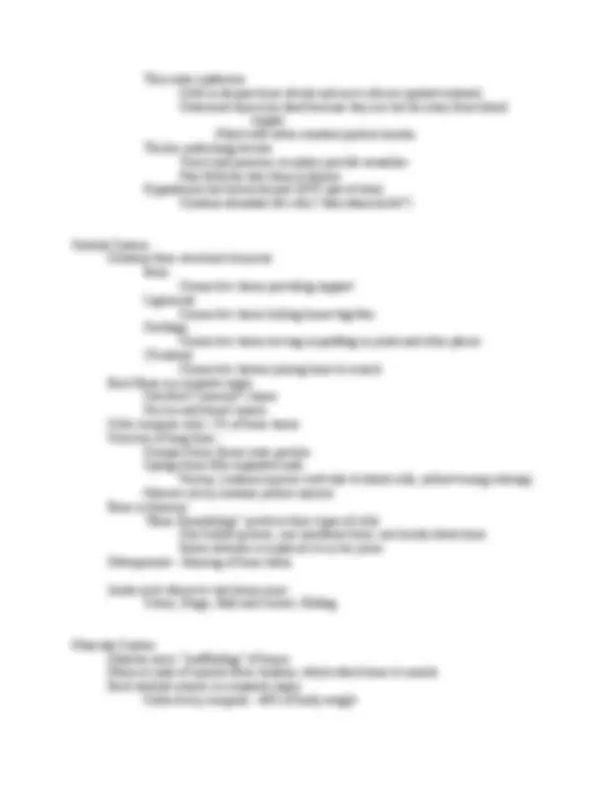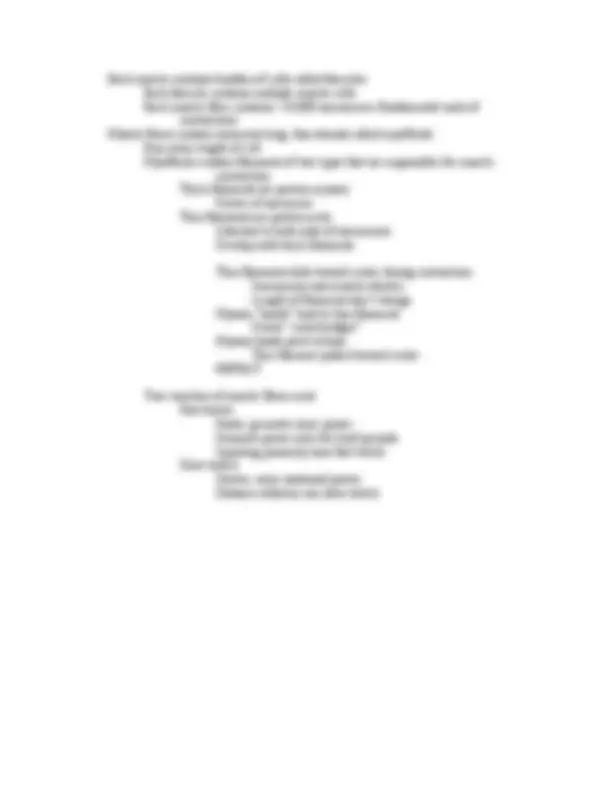




Study with the several resources on Docsity

Earn points by helping other students or get them with a premium plan


Prepare for your exams
Study with the several resources on Docsity

Earn points to download
Earn points by helping other students or get them with a premium plan
Community
Ask the community for help and clear up your study doubts
Discover the best universities in your country according to Docsity users
Free resources
Download our free guides on studying techniques, anxiety management strategies, and thesis advice from Docsity tutors
Material Type: Notes; Professor: Barnes; Class: INTRO TO BIOLOGY; Subject: Biology; University: SUNY College of Technology at Canton; Term: Spring 2009;
Typology: Study notes
1 / 4

This page cannot be seen from the preview
Don't miss anything!



Chapter 25 : The Human Body and Three of its Systems Cell – basic unit of life Tissue – a group of cells performing a common function Organ – combined tissues Organ System – group of organs Human body has 11 organ systems Organism – multiple organ systems 4 Basic Tissue Types in Human Body Epithelial Tissue Covers internal and external body surfaces Outer layer of skin, lining of blood vessels, lining of stomach, etc. Comprised of mostly tightly packed cells One or several cell layers thick Functions: Barrier (skin prevents microorganisms from entering body) Transport (sugars are transported across the epithelium lining the sm. intestine) Production of Various Substances (glands within the stomach epithelium produce and secrete digestive juices Connective Tissue Stabilizes and supports other tissues (ex. bone tissue) Most are composed mainly of extracellular material with widely separated cells Muscle Tissue Specialized in its ability to contract Three types: Skeletal (ex. bicep; striated and voluntary) Cardiac (present only in heart; striated and involuntary) Smooth (ex. blood vessels, uterus, etc; non-striated and involuntary) Nervous Tissue Specialized for rapid conduction of messages (electrical impulses) Two main types of cells: Neurons (conduct impulses) Glial cells (perform support functions for neurons) Tissues Present in Stomach Inner surface lined by epithelial tissue supported by underlying connective tissue Smooth muscle underlies the connective tissue Nervous tissue controls the release of digestive juices and controls contractions of smooth muscle Blood vessels present also contain all four tissue types Organs and Tissues Make up Organ Systems: Body Support and Movement The Integumentary System
Skin, hair, nails, secretory cells Protection, regulation of body temperature The Skeletal System Bones, cartilage, ligaments, tendons Support, protection, storage of fat and minerals The Muscular System Skeletal muscles provide movement, posture, support, heat generation Coordination, Regulation, and Defense The Nervous System Brain, spinal cord, other nerves, sense organs Rapid communication system The Endocrine System Pituitary, thyroid, parathyroid, thymus, adrenals, pancreas, gonad Hormone communication system The Immune System Thymus, lymph nodes, spleen, lymphatic vessels Collection of cells and proteins Protection from invading microbes Returns fluid to circulatory system Transport and Exchange with the Environment Cardiovascular System Bone marrow, heart, capillaries, arteries, veins Transports materials in body Respiratory System Nasal cavity, pharynx, larynx, trachea, bronchi, lung Facilitates exchange of O 2 and CO 2 Digestive System Salivary gland, pharynx, esophagus, liver, stomach, gall bladder, sm. intestine, lg. intestine, anus Breakdown and absorption of food Urinary System Kidney, ureter, urinary bladder, urethra Elimination of wastes from blood Retains useful molecules in blood Reproductive System Male: production of sperm Seminal vesicles, prostate, sperm duct, urethra, epididymis, testis, penis, scrotum Female: production of eggs, nourishment to offspring (in utero, mammary glands) Mammary glands, uterine tube, ovary, uterus, vagina, external genitalia Integumentary System Skin is the primary component (along with hair, nails, glands) Primary function is protection Skin is organized into two parts
Each muscle contains bundles of cells called fascicles Each fascicle contains multiple muscle cells Each muscle fiber contains ~10,000 sarcomeres (fundamental units of contraction) Muscle fibers contain numerous long, thin strands called myofibrils Run entire length of cell Myofibrils contain filaments of two types that are responsible for muscle contraction Thick filaments are protein myosin Center of sarcomere Thin filaments are protein actin Attached to both ends of sarcomeres Overlap with thick filaments Thin filaments slide toward center during contraction Sarcomeres and muscle shorten Length of filaments don’t change Myosin “heads” bind to thin filaments Create “cross-bridges” Myosin heads pivot at base Thin filament pulled toward center REPEAT Two varieties of muscle fibers exist Fast twitch Faster, generate more power Generate power only for brief periods Sprinting primarily uses fast twitch Slow twitch Slower, more sustained power Distance athletics use slow twitch